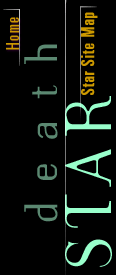 |
 |
|
A Self-Guided Tour of the Electromagnetic Spectrum
|
|

|
Visible light
The rainbow of colors found in the spectrum of light is astonishing to the human mind, and yet visible light makes up just a tiny slice of the electromagnetic spectrum.
The wavelength of light is short—shorter than the width of a bacterium.
For a light bulb to give off white light, its filament needs to heat up to about 3,000 degrees C. Electrical energy supplied to the filament heats its individual atoms. The atoms gain this energy, then lose it again. When they do so, they release photons, the building blocks of light.
Laser beams, which can be composed of infrared and ultraviolet light as well as visible light, can cut through steel, weld together high-melting-point metals, and possibly destroy nuclear missiles in flight. They can also be put to less invasive uses, of course, such as pointing using a pen-type laser like the one pictured here.
Earth's atmosphere is virtually transparent to visible light (as well as near-infrared radiation and radio waves), and so telescopes on remote mountaintops can produce remarkable images. Still, there's a great advantage to having an optical telescope above the distortion created by Earth's atmosphere. This is an image of Galaxy M100 taken by the Hubble Space Telescope.
Next: Ultraviolet
intro |
radio |
microwave |
infrared |
visible light |
ultraviolet |
x-ray |
gamma
One Astronomer's Universe |
A Bad Day in the Milky Way
Catalogue of the Cosmos |
Tour the Spectrum
Resources |
Transcript |
Site Map |
Death Star Home
Search |
Site Map |
Previously Featured |
Schedule |
Feedback |
Teachers |
Shop
Join Us/E-Mail |
About NOVA |
Editor's Picks |
Watch NOVAs online |
To print
PBS Online |
NOVA Online |
WGBH
© | Updated January 2002
|
|
|
|